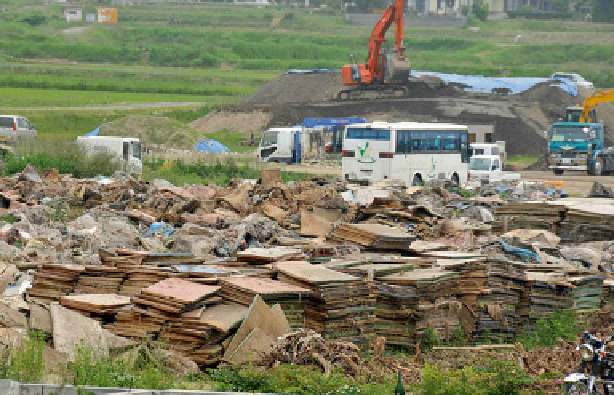Environmental Engineering Reference
In-Depth Information
Fig. 17.6
Piled-up tatami mats awaiting to be processed in the Hajikami facility
This result, together with emissions resulting from housing reconstruction and land
use change very likely could put into question commitments made by Japan under
the Kyoto Protocol in terms of GHG reductions.
2
17.3.1
Debris Management in Miyagi
In the aftermath of the tsunami, Miyagi prefecture had to deal with 18 million tons
of debris (11 million considered as general disaster debris, and 7 million tons in
tsunami deposits
3
), all of which was kept at 90 temporary sites, presenting an enor-
mous potential pollution hazard. By the end of February 2013, about 90 % of the
debris was already cleared and stored (56 % percent of which was general debris,
while 29 % consisted of tsunami deposits); the remaining amount is expected to be
dealt with by March, 2014 (MOEJ
2013a
).
Thirty-three temporary incinerators and thirteen sorting and shredding facilities
were built in Iwate, Miyagi and Fukushima prefectures to deal with the amount
of debris, although other prefectures have also assisted in disposal processes
(MOEJ
2013b
). The Ministry of the Environment reported that treatment fi nished in
29 temporary incinerators and 13 sorting and shredding facilities by February 2014,
likewise that the number of temporary storage sites decreased by 54 of 17 %
(MOEJ
2014
).
2
In late 2013, Japan decided to reduce its greenhouse emissions by 3.8 % from their 2005 level by
2020 due to the shutdown of its nuclear industry (UNFCC
2013
).
3
Tsunami deposits consist mainly of soil, mud and sand.

Search WWH ::

Custom Search